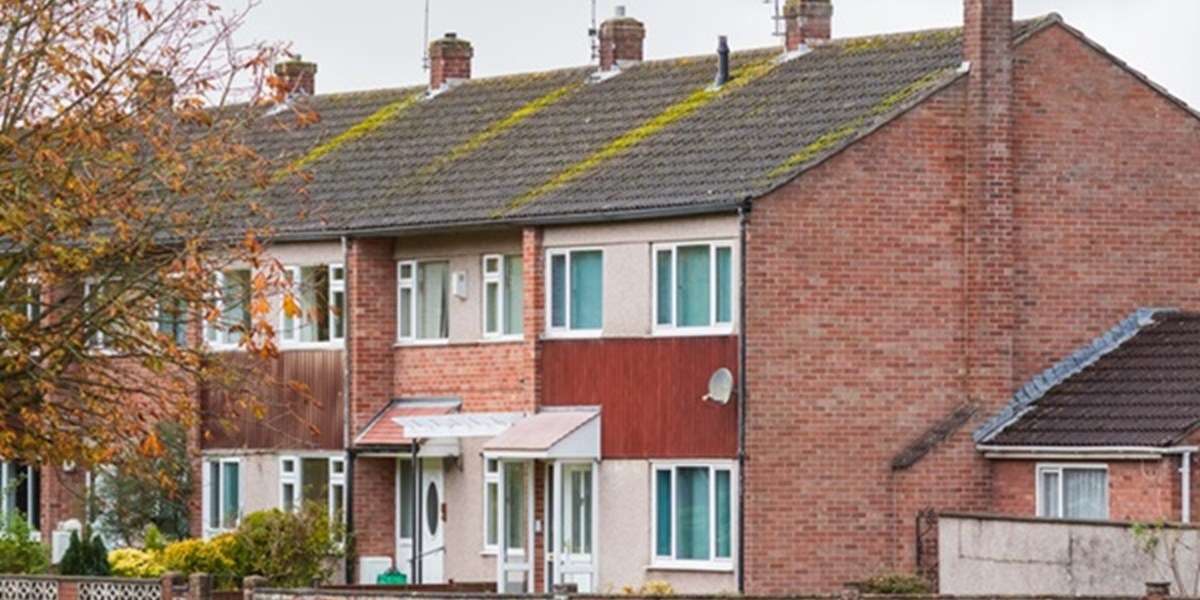
Unique property reference numbers are a key element of the data infrastructure for solutions to the sector’s problems, writes Gayle Gander, head of marketing, GeoPlace
Social housing is beset by challenges around the UK, with local authorities and housing associations struggling to meet the heavy demand for homes and to maintain the quality and safety of their properties.
They also have responsibilities in supporting vulnerable residents, maintaining their homes to a high standard and being ready to share information with health and social care.
But there are long waiting lists, some homes are in a poor state and there are difficulties in working with other departments and agencies. The sector needs a transformation, and this requires stronger collaboration between organisations and the data infrastructure to make this possible.
This is where unique property reference numbers (UPRNs) come in. Allocated by local authorities and managed nationally by GeoPlace, they provide a unique identifier for every addressable location in the country and are fundamental to the data matching and analysis that can underpin the transformation.
Data weakness
The data challenges in social housing have recently been highlighted by the Local Digital team in the Ministry of Housing, Communities and Local Government, with a blogpost referring to the waste incurred in repairs and allocations, relating this to weaknesses in the sector’s data.
It also pointed to shortcomings in the interoperability of digital systems, which make it difficult for social housing providers to access, use and share data, which turn leads to operational inefficiencies. This derives largely from the underdevelopment and limited take-up of data standards for housing, a situation that has to be rectified to help provide solutions to the problems.
Local Digital is taking a lead on this, making a priority of developing and refining the data standards, designing services to support their adoption, and finding a sector ownership model. It is also planning to build a social housing data community involving local authorities, housing associations and technology suppliers.
The UPRNs associated with every addressable location in the UK can provide a catalyst to accelerate this plan. There are over 41.5 million addresses maintained and supplied to GeoPlace from over 300 local authorities and government bodies such as Ordnance Survey, the Valuation Office Agency, the Scottish, Isle of Man, Channel Islands and Northern Ireland Governments, and Royal Mail. These cover every location across the UK, providing the granular, property-level detail – including sub-divisions of blocks of flats – to make datasets more reliable for reporting, analysis and sharing.
Open data and mandate
They are available as open data through the Ordnance Survey Open UPRN product, are freely available to the public sector under the Public Sector Geospatial Agreement, and have been mandated by the Central Digital and Data Office as the core addressing identifiers for use by the public sector.
They are also part of the BS766 standard for addressing, which supports the linking of different land and property identifies to reduce errors in data exchange and communications; and they are included in data frameworks such as the Scalable Approach to Vulnerability Via Interoperability (SAVVI) and the VIPER tool for the rapid identification of vulnerable households in an emergency, both supported by Local Digital.
In turn, this helps in supporting vulnerable residents of social housing. Welfare teams can use the datasets to identify a household where a person could need their services, and maintenance teams to schedule refurbishment works against specific risk protocols.
There are examples of how UPRNs have been used to improve social housing: Hackney Council has used them in targeting its efforts to identify properties at risk of damp and mould; and Halton Housing Association to identify the locations of garages, support their maintenance and identify those that could be replaced with new houses.
In addition, 90 leaders from the UK residential property industry recently wrote to the Government outlining a clear path for how the adoption of UPRNs can transform the property market.
Supporting assets
They are a crucial element of the data infrastructure for improvements in social housing, and for supporting vulnerable residents, and councils and housing associations should ensure they are included in all of its relevant datasets, and press organisations they work with to follow suit. This will provide the basis for more effective data matching to support core purposes of the sector.
As the LGA has said, UPRNs are "key to almost everything that's delivered or achieved by councils".
This also reflects the priority of maintaining data standards across public services. Data is at the heart of the best decisions and processes, and UPRNs provide the element of place that is crucial to many of these. Ensuring that they are widely used helps to provide better decisions and operations.
UPRNs are not a panacea for the problems in social housing, but they can provide a foundation for the development of solutions and the stronger coordination of efforts to put them into effect.
Find out how Hackney Council has used UPRNs to identify damp and mould; why Halton Housing Association believes they provide a 'golden thread' in bringing together the data to deliver the best possible outcomes for residents; and how Nottingham's Safer Housing team has used UPRNs to make huge gains in efficiency, both in costs and time saved.
Also, check out our blog on using UPRNs to like housing data and support a data community.





